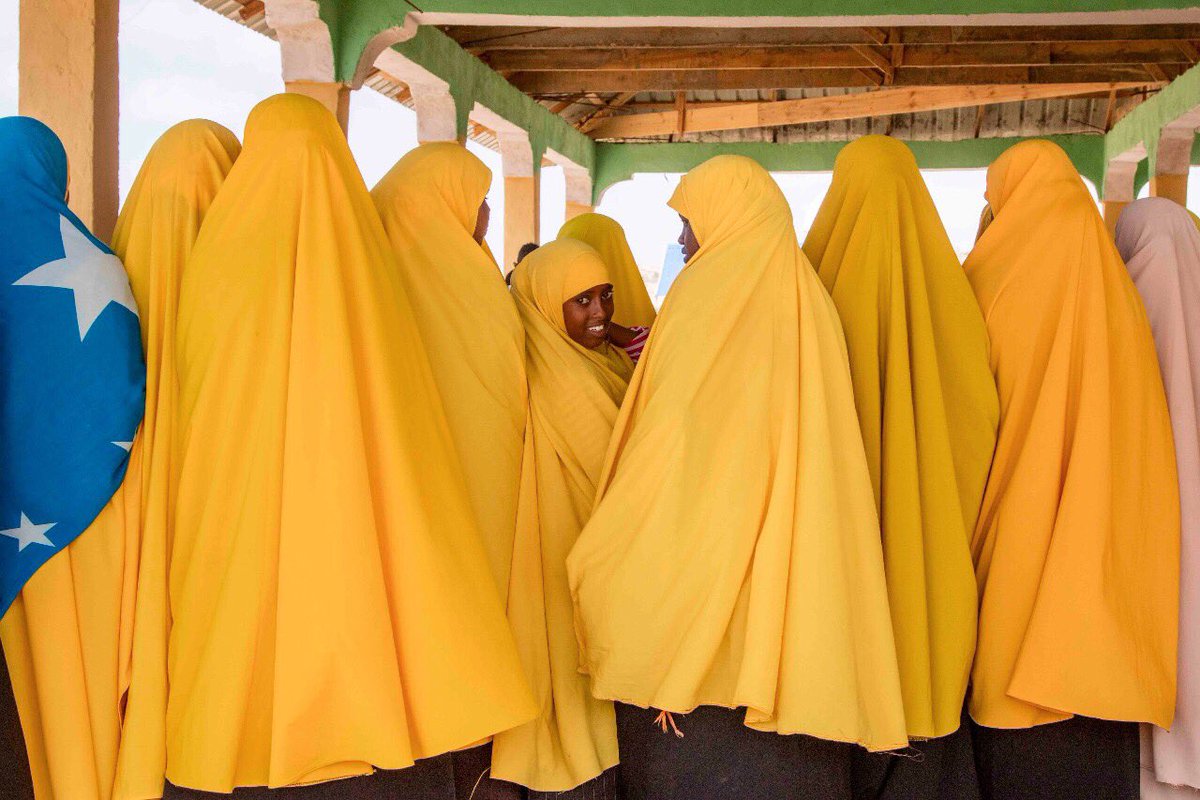UN refugee chief finds Somalia suffering from instability and drought, but sees hope
KISMAYO – On a visit to the recovering southern port city of Kismayo, the UN High Commissioner for Refugees, Filippo Grandi, pledged to continue investing in housing, education and livelihoods for returning refugees, IDPs and the local population.
In his tour of Somalia’s third largest city, he saw enormous physical damage from 28 years of conflict but also visible signs of restoration and economic activity in the streets, including new small businesses run by returning refugees.
Grandi emphasized that UNHCR only assists returning refugees who have made an informed and voluntary decision to return and has programs to reintegrate them.
"We see refugees ... as an asset into which we need to invest.”
“Refugees should be a force to rebuild the country when they decide to come back,” Grandi said, noting that UNHCR, the UN Refugee Agency, assisted over 100,000 to return over the past two years, while over one million remain in exile. “We see refugees not as a humanitarian problem, but as an asset into which we need to invest,” he added.
In a meeting with the President of the State of Jubaland, Ahmed Mohamed Islam, the President spoke of the need for refugees who were educated and trained to come to Kismayo to contribute.
“When you want to build a state, you need human resources. Those coming back can fill that gap.”

Most returning refugees had spent years, even decades in exile, waiting for signs of stability and the promise of education and jobs before giving up the safety and isolation of refugee camp life. While some 19,000 refugees in the Dadaab refugee camp are currently in the pipeline for voluntary return, most Somali refugees cite security concerns as their top reason to remain in Kenya.
Al Shabaab militants still control large parts of south-central Somalia and clan violence and political tensions contribute to the instability.
On the outskirts of Kismayo, Grandi met a family about to move into a UNHCR-constructed house in a self-contained settlement which also a provides a school, a health clinic, a covered market and a mosque. They had spent the last 28 years in the remote Ali Addeh refugee camp in Djibouti, which the refugee head visited last week.
Visibly gleeful, the eldest son, Farah Hassan Abdi, 24, declared his happiness to be “back to my country that I love,” and his plans to become a doctor or even a surgeon so he could help his people.
"What a great result to see young people go from being refugee to being back in their country."
As a refugee, he had no such hope. The simple, sturdy houses were built on land provided by the government on the sandy outskirts of the city. The UNHCR and the American Refugee Committee (ARC) project is designed to provide returning refugees, but also a percentage of people who had been internally displaced as well as people from the local community, with a decent living environment so they can focus on educating their children and pursuing work.
Surrounded by a group of students at the new school, Grandi said: “The boys and girls around me are people that have grown up in a refugee camp. They are not refugees anymore. What a great result to see young people go from being refugees to being back in their country, contributing to their country.”
But the refugees are returning to a country with massive challenges. A terrible drought has forced over one million Somalis to leave home and move to other parts of the country, mostly to urban areas. Thanks to a large-scale humanitarian response this year, famine has been averted. However, one in two Somalis are acutely food insecure and the risk of famine remains.
This has meant the global response has focused more on humanitarian relief and less on development, and has increased the population of internally displaced people to two million. A small percentage of returning refugees have been unable to return to their original homes and have become internally displaced persons, or IDPs.

Given the country’s current struggles, Somalia’s Federal President, Mohamed Farmajo, told Grandi at a meeting on Saturday in Mogadishu, “We want our people back. This is their home.” But he added that it must be a gradual and organized transition. “We need to avoid returning refugees becoming IDPs.”
For those who do, the President urged to move people out of the dependency they knew in the refugee camps. “People know how to be given fish, we need to teach them how to catch fish,” he said. He thanked UNHCR for its partnership with the government in aiding the displaced but also in providing shelter, establishing schools and providing livelihoods training.
- See also: Return to Somalia
While in Mogadishu, Grandi and the Mayor, Thabit Abdi Mohamed, inaugurated a new school located a few hundred meters away from the deadliest single attack in Somali history, when on 14 October a truck bomb killed over 500 people. “The best response to violence is education so what can be better than building a school,” Grandi said.
In his meetings with the Somalia leadership, Grandi recalled UNHCR’s work with Somali refugees since the start of the conflict in 1991. “UNHCR has been with the Somali people in exile from the start. But we are aware they are still apprehensive – their first concern is security and their second, lack of services, especially education. We will continue to be with them until they want to go back.”











